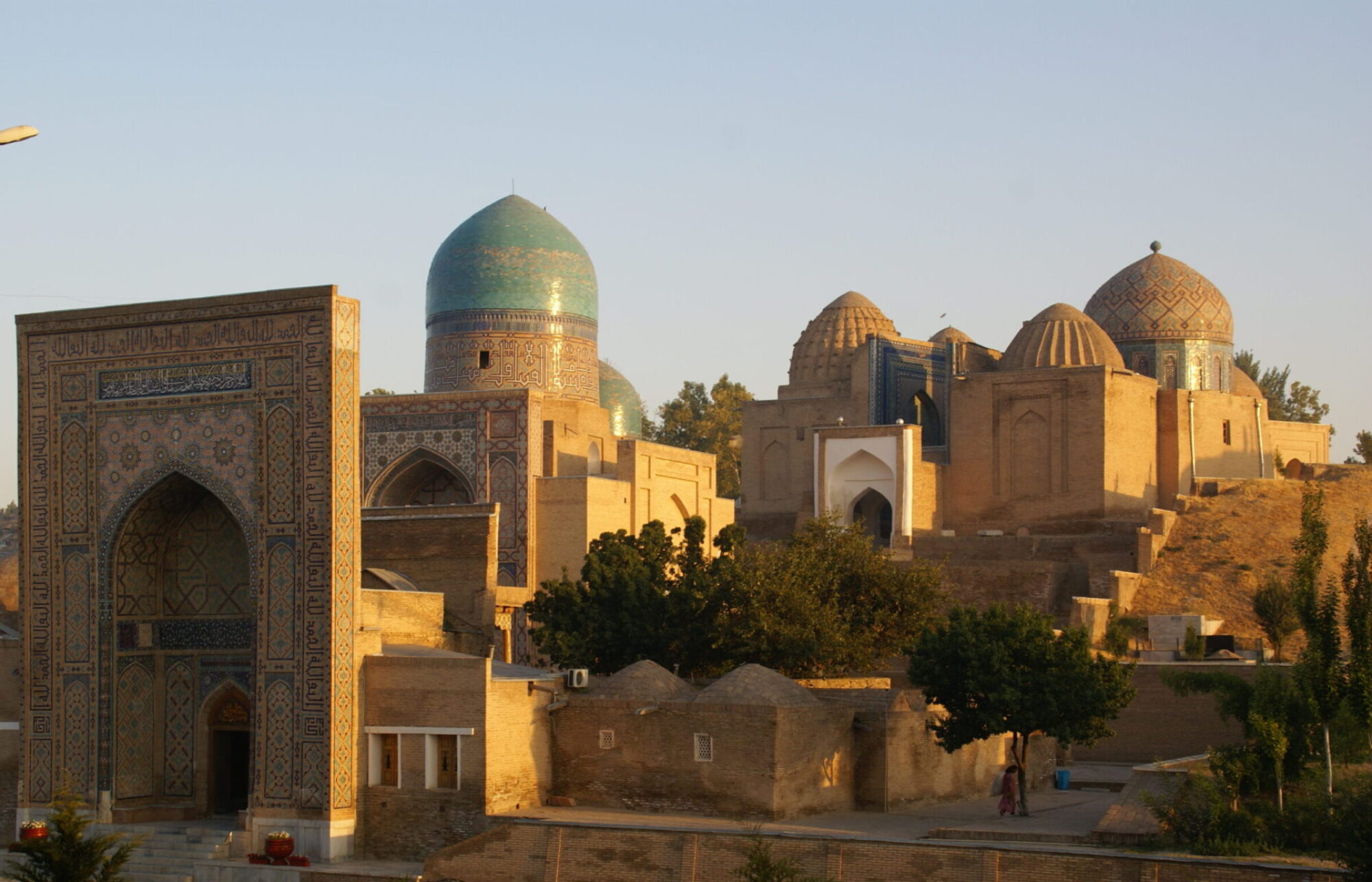Text taken from: Silk Road Cities. Documented through photographs, prints and postcards.
The city of Shahr-i Sabz
The historic city of Shahr-i Sabz (Verdant City) is situated some 80 km to the south of Samarqand in the upper Kashkadarya valley beyond the Zarafshan Mountains. The older settlement named Gava Sugda, was one of the centres of Achaemenid Sogdiana. Under the Greek authority the city was called Nautaca. The Hellenistic citadel Kalandatepa is located 5 km to the north of Shahr-i Sabz; the early medieval city of 40 hectares has been found nearby.
By the beginning of the Common era, a city then known as Kesh was the centre of a small but rich state. The city grew further to become a capital of Sogdiana. Between 567 and 658 the rulers of Kesh paid taxes to the Western Turkic khaganates. The Chinese histories bear witness to the political importance of early medieval Kesh (called Shi, and later Ke-shuang-na). The Sogdian ruler Dizhe mentioned between 605 and 615 is said to have erected the city and proclaimed his vassalage to China.
In 710 the city was conquered by the Arabs and in 740 the local prince of Kesh started to issue coins with Arabic legends. Kesh became the last bastion of the insurrection of ‘people in white robes’, followers of al-Muqannaʻ (d. 779), who claimed to be a prophet, and founded a religion which was a mixture of Zoroastrianism and Islam.
In the Samanid period, Kesh is described as a small town with a citadel, an inner city, suburbs, and an outer city. The citadel and the inner city were already in ruins and had become unpopulated before the 9th century. From the 12th century onwards, a small settlement was located on the site of present-day Shahr-i Sabz.
In the 14th century Shahr-i Sabz was the stronghold of the Turkic Barlas tribe. The Turco-Mongol ruler Timur was born in the vicinity of the city around 1336. Shahr-i Sabz was regarded as Timur’s summer residence. In addition, Shahr-i Sabz became the burial ground for the male members of the Barlas tribe. Two sons of Timur, Jahangir (d. 1376) and ‘Umar Shaykh (d. 1394), are buried in Shahr-i Sabz and not in the dynastic Timurid mausoleum of Gur-i Amir in Samarqand. Most likely Timur also planned to be buried there as the remains of his crypt were discovered in the early 20th century. In the Uzbek period, Shahr-i Sabz was controlled by a beg (local ruler) under more or less nominal suzerainty of Bukhara. The city was captured by the Russians in 1870.
In 2002, the 2700th anniversary of Shahr-i Sabz was celebrated. Between 2014-2016 the city underwent a massive regeneration campaign during which many residential buildings were demolished between two of the major Timurid monuments: the Aq Saray (second half of the 14th century) and the Kök Gunbad Mosque (1435-1436). As a result of these recent urban changes, the city was put on the UNESCO List of World Heritage in Danger in 2016.
Sources on Shahr-i Sabz
Archnet: Aq Saray


